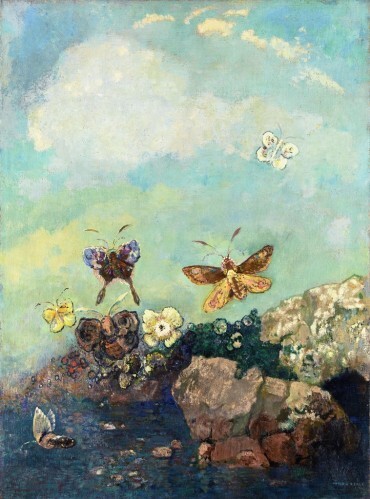In Praise of Modesty
When I was in sixth grade, I had a French teacher called Madame. All French teachers are called Madame, unless they are called Mademoiselle, and the Madames are scarier. I’ve never had a French teacher that I did not find mildy terrifying.
This particular Madame was actually French. Every day, she wore a sensible skirt whose hem brushed the bottom of her knees, and the sorts of sensible heels that older European women wear, and her gray hair was tucked into a sensible but still elegant bun. She looked quite different from our other younger, more casual, American teachers.
One day, she asked all of us to stay after class. We were all girls — it was not sufficiently masculine, in sixth grade, to learn French. And she gave us a lecture on how to sit. First, she placed one of the wooden chairs at the front of the class. Then, she splayed in it, the way we, jeans-clad sixth graders, splayed in our chairs. And then she told us it was not elegant, that we looked sloppy. And she sat up properly. She showed us how to sit.
This may sound rather silly — an old French woman teaching a class of sixth-grade girls how to sit. But the lesson stayed with me. It was not about modesty in the traditional sense of keeping your knees together, although sitting properly did involve an appropriate placement of the knees. It was about having a kind of ease and elegance and simplicity in your movements. A kind of appropriateness.
I was reminded of this lesson recently in Vienna. There were some ostentatious buildings, of course — the Hapsburgs were nothing if not ostentatious. But there were no skyscrapers in the central city. The architecture felt eclectic, with its ancient apartments and modern cafés, but it still felt whole, as though all parts of it belonged to a single body. Budapest feels even more like that to me, but of course Budapest has official height restrictions for every building except the MOL tower, which was built before the height restrictions came into effect. (Buildings in Budapest can’t be higher than 96 meters — the height of St. Stephen’s Basilica.) The MOL tower sticks up like a clichéd thumbs-up sign. Visually, it resembles a sixth-grade girl with her leg sticking out into the aisle, where you can trip over it. On the skyline of Budapest, your eye trips over the MOL tower. It’s the most immodest building in Budapest. Predictably, MOL is an oil and gas company.
We are living in an age of immodesty that has nothing to do with wearing short skirts, and everything to do with showing off your shopping haul from the latest fast fashion retailer. With consuming too much, thoughtlessly. With ostentation for its own sake. (The Hapsburgs were guilty of this too, of course. As I walked through the Kunsthistorisches Museum, I passed through room after room of their golden tchotchke. It was like eating a dinner of nothing but petit fours — endless fondant, so sweet it makes your teeth hurt.) We are living in the age of starchitecture, of couture gowns that can’t be worn off a runway or red carpet. (Everyone has phones with video, so we can all see actresses trying to sit in their Oscar or Golden Globe gowns, tilted in their chairs like see-saws, not even pretending to eat.) It’s the age of “drill baby drill,” when maintaining our extravagant lifestyles is more important than the environment. The age of chefs creating expensive dishes that are barely food — and, on the other hand, supermarket aisles filled with colorful items that are definitely not food. Perhaps the innovation of our age is that Hapsburg-level waste is no longer confined to the Hapsburgs. We can all have homes filled with the latest things that no one actually needs, but instead of endless porcelain shepherdesses we have Labubus.
I will be the first to proclaim myself guilty. I recently counted the skirts in my closet, and I have thirty-three. Those are only the summer skirts. Clearly, it’s time for a personal Mari Kondo moment, and perhaps I should not be writing a post on modesty, from my own position of immodestly owning seven pairs of Keds on two different continents. I acknowledge the beam in my own eye. But I still want to say — we need to rethink the way we are living. In the United States, in particular, we are in danger of creating another gilded (rather than golden) age, where the White House begins to resemble the Hofburg, with its Baroque gilding, and where the wealthy get most of the spoils. The difference, in our twenty-first century, that the poor also get spoils — cheap plastic spoils. They are even promised their own AI servants, who lie and manipulate just as real servants probably did in the eighteenth century. And the things that are natural, simple, appropriate, are not valued.
So what is modesty? I think it’s listening to the sounds of birds. Of growing a garden and allowing the insects to flourish, even as you net your raspberries. Of realizing that diamonds are just hard rocks and designer clothes are made in the same factories that manufacture for Target. Of knowing there is such a thing as enough — in Keds, in yachts (the number of enough yachts is none), in educational theories as well as in foreign policy. How do you define enough? I think you do it by developing a kind of good taste, a sense of appropriateness and elegance. What is an elegant building — one that reflects the needs of its users, not the ego of its designer? What is an appropriate dress — one that fits the person who will wear it and the occasion on which it will be worn? What is easy to live in, move in? These seem like simple questions, but they are fiendishly complicated — philosophers have been trying to define good taste since around the time the Hapsburgs became the it-royals of Europe.
One fundamental problem of our economic and political system is that we don’t actually need most of the things we have, so the system, to perpetuate itself, has to make us want more. We have to, somehow, learn what is enough.
That’s what I mean by modesty. And we need it pretty desperately, in political life as well as in our shopping habits. Perhaps it begins with the body itself — how do we sit, how will we move, what will we do today? Will we listen to the birds? Will we walk in the city, among the beautiful old buildings? (I will — but then, I’m in Budapest.) And then it extends outward. What will I buy? Which services will I use? Who will I vote for?
I know this post is itself a bit Baroque, curling all over the place. What I want to praise is a kind of life in which we plant gardens and write poems and paint pictures. In which we listen to concerts in churches and under the trees in city parks. In which we admire the moon in her phases. In which butterflies are more important than the latest cheap plastic toy. Maybe even one in which cathedrals are taller than financial buildings, although that’s asking for a lot in this intensively capitalistic age. In which old French women with buns of gray hair sit elegantly, preferably by a river, preferably with a croissant and a cup of hot chocolate. I hope the Madames know, in some way, that we still remember them.

(The image is Butterflies by Odilon Redon.)
 newest »
newest »
 Beautifully written, insightful, and wise. Thank-you for your poetic essay on the human condition, timely!! I feel this advice and wisdom deeply, it speaks, serendipitously, to thoughts I was just mulling over now. Thank-You! My "Madame" was my beloved ballet instructor, so elegant, so rigorous, so compassionate. The best of humans. To live beautifully is to love in good measure, and not to be ensnared by the oily tentacles of addiction to drown out our anguish. Moderation and gratitude are what counter suffering.
Beautifully written, insightful, and wise. Thank-you for your poetic essay on the human condition, timely!! I feel this advice and wisdom deeply, it speaks, serendipitously, to thoughts I was just mulling over now. Thank-You! My "Madame" was my beloved ballet instructor, so elegant, so rigorous, so compassionate. The best of humans. To live beautifully is to love in good measure, and not to be ensnared by the oily tentacles of addiction to drown out our anguish. Moderation and gratitude are what counter suffering.



